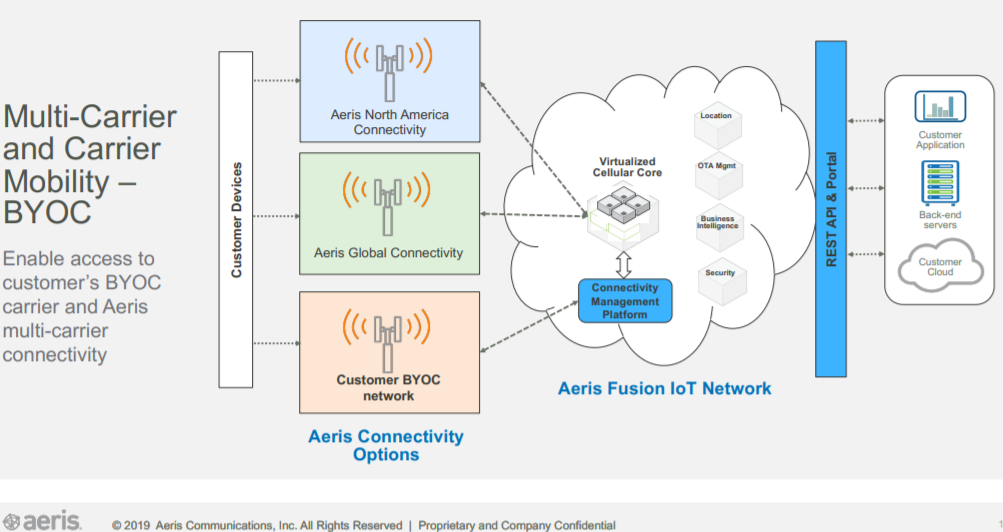By Gina Roos, editor-in-chief
Aeris announced the general availability of its Fusion IoT Network, a purpose-built, 5G-ready platform for connecting IoT devices across wireless technologies, including 2G, 3G, LTE, LTE-M, and NB-IoT. The company leverages more than a decade of wireless IoT connectivity experience to deliver a multi-technology, cloud-native network infrastructure with a complete suite of cellular network elements for IoT,including an HLR/HSS, PCRF, SMSC, AAA, PGW, and OSS/BSS subsystems.
Historically, the model of operating in silos and selecting IoT connectivity after developing the business case, application, and solution were sufficient, but now these strategies don’t meet the performance and reliability required by new IoT programs, according to Aeris.
“The era of simple IoT connectivity solutions is over. Leading customers demand more – greater flexibility and choice, better alignment to business objectives, meaningful improvements to IoT program capabilities, cost, and security,” said Raj Kanaya, managing director of automotive and chief marketing officer, Aeris and CEO, Aeris Japan, in a statement. This is our mission with the Fusion IoT Network.”
The Fusion IoT Network was designed to eliminate the silos, and offer greater program functionality for updates, administration and security.
Some of the key features include:
- Over-the-air (OTA) updates: By making the OTA process aware of the state of connectivity, users can reduce cost by 60%, improve update scaling by 40%, and increase battery life by 30%. Customers can either use Aeris connectivity-aware OTA APIs to integrate into their own solution or Aeris’ OTA campaign manager.
- Multi-level administration: In many cases, IoT solutions are sold through channels where the partner may be responsible for IoT connectivity billing, monitoring, and troubleshooting, said Aeris. The Fusion IoT Network can handle account hierarchy and complex distribution models with strong security between customer accounts.
- Security: The Fusion IoT network provides multi-layered security solutions, including detecting anomalies at the connectivity layer.
- Purpose-built IoT billing system: The network handles non-standard models, including event-based and lifetime pricing.
In addition, the platform offers flexibility across carrier networks and technologies, particularly advantageous as IoT programs scale up from single-region to global deployments. The Fusion IoT Network enables carrier mobility through subscription management, multi-IMSI solutions, or pairing the wireless subscription to the user’s personal plan.

The network also has deep integration into multiple global wireless operators to provide greater connectivity control and visibility.For example, the network provides feedback on IoT device state and location instantly, enabling faster diagnosis, compared with many IoT connectivity providers that deliver feedback in 15 to 30 minutes or longer, according to Aeris.
The company also announced that it has selected the Google Cloud Platform (GCP) as the infrastructure provider for the Fusion IoT Network due to its advantages in reliability, cost efficiency, and ML/AI innovation as well as its global IP network and managed Kubernetes Engine.
The migration to GCP is the first step in the multi-year partnership, said Aeris, which will focus on technology collaboration and integrated solutions.
Advertisement
Learn more about Electronic Products Magazine





